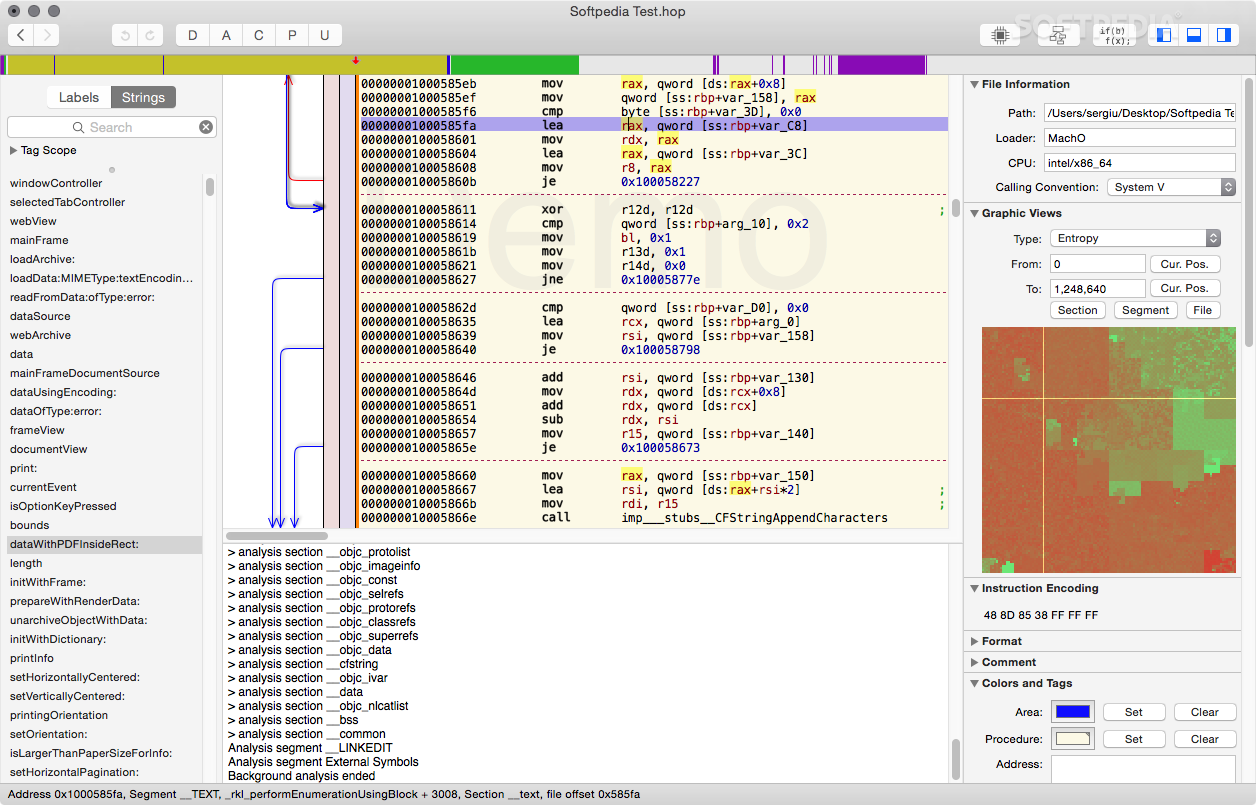

- #GUIDE TO USING HOPPER DISASSEMBLER HOW TO#
- #GUIDE TO USING HOPPER DISASSEMBLER CODE#
- #GUIDE TO USING HOPPER DISASSEMBLER FREE#
- #GUIDE TO USING HOPPER DISASSEMBLER WINDOWS#
I also ran the strip utility to remove any debug symbol names of internal functions that may be there, which would make it too easy (you will almost never see these in distributed closed-source programs).
#GUIDE TO USING HOPPER DISASSEMBLER CODE#
The source code is yonder, but it is so old that I had to change a few functions to return 0 instead of void to get llvm to compile it for OSX. Having reviewed it during training, I strongly recommend that you do not use it on a production system (not that there is any use for it in this millennium). I chose it because we use it as a standard test case at Veracode owing to its extreme Unix-ness and the fact that few new analysts will have examined it before. We will be looking at an ancient piece of C code for Unix called metamail, which was a mimetype helper that received base64-encoded attachments from email clients and opened the appropriate viewing program. All decompilers have strange quirks owing to the medium of disassembly they have to work with, so one needs to learn to spot and deal with these quirks that are not seen in proper source code.
#GUIDE TO USING HOPPER DISASSEMBLER HOW TO#
We will start at line one and proceed linearly, just to get a feel for how to read decompiled code.

The binary we examine is non-malicious and non-obfuscated, and is not run through the highest optimization settings of the compiler. This tutorial is aimed at experienced C programmers who are beginners in static analysis. (No-one at Veracode is affiliated with Hopper or its creator.)

With Hopper, anyone can take a look into an application's internals without needing a detailed understanding of assembly (although you will still need to learn it if you want to get very serious). It costs $29 on the App Store or direct from the creator.
#GUIDE TO USING HOPPER DISASSEMBLER WINDOWS#
Hopper is a disassembler which can handle 32-bit or 64-bit programs for both Windows and OSX (other platforms, including iOS/ARM, are in development) with a basic but surprisingly functional decompiler mode. it's beta) which is affordable to any hobbyist at home with access to a Mac. The industrial-strength commercial decompiler solution is Hex-Rays, and this tutorial certainly applies to its use, but I am using a new tool still under active development (i.e. A C decompiler is able to reconstruct the disassembly into something approximating the original source code, minus niceties such as variable and function names, comments, macros, and anything else that is there to help programmers rather than the computer. In the past few years, however, decompiler technology (conventionally considered "impossible") has really picked up.
#GUIDE TO USING HOPPER DISASSEMBLER FREE#
There are many free and commercial disassemblers for Intel binaries to pick from. The simplest tool for binary analysis of C/C++ is a disassembler, which reveals the raw assembly opcodes the compiler produced. Laws concerning reverse engineering third-party programs without permission vary around the world, but in this tutorial we will use an open source program that is safe for everyone to dissect.


 0 kommentar(er)
0 kommentar(er)
